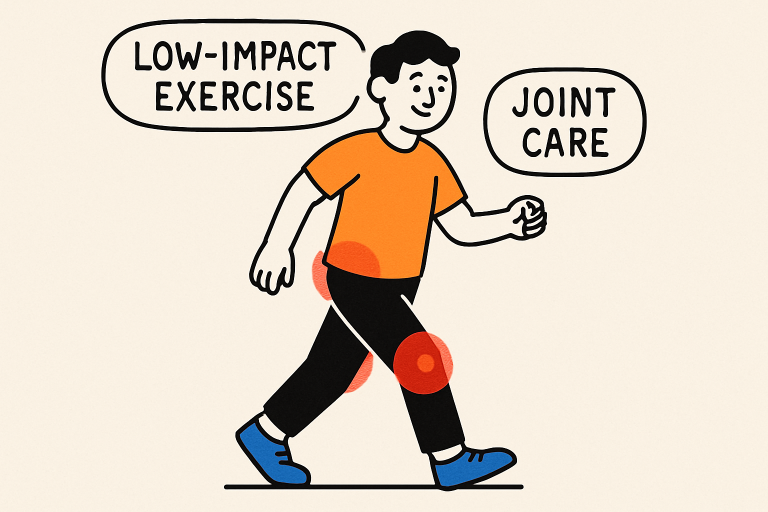Table of Contents
- Introduction
- Physical Therapy
- Medication Management
- Injection Therapies
- Regenerative Medicine
- Radiofrequency Ablation
- Lifestyle Modifications
- Alternative Therapies
- Conclusion
Introduction
Chronic joint pain is a persistent and often disabling condition that millions of people face daily. The search for relief frequently leads patients to consider surgery, yet a growing number of alternative solutions are available that can restore mobility and comfort—without going under the knife. Modern advances in joint pain treatment are providing patients with tailored options that address symptoms and promote healing using non-surgical interventions.
Understanding the full spectrum of these treatments is essential for anyone wrestling with ongoing joint pain. Early intervention and a combination of therapies can not only alleviate discomfort but also help preserve joint function in the long term. This article outlines the most effective non-surgical therapies for chronic joint pain, helping you make informed decisions about your care.
Physical Therapy
Physical therapy remains the cornerstone for managing chronic joint pain. Working with a trained physical therapist, patients engage in customized exercises designed to strengthen the muscles supporting the joint, increase flexibility, and enhance balance. This proactive approach not only reduces pain but restores mobility and function, empowering patients to take control of their recovery. Multiple studies have shown that consistent physical therapy can have lasting effects on pain relief and joint function, especially for conditions such as osteoarthritis and degenerative joint diseases.
Medication Management
Medications play a vital role in alleviating chronic joint pain and inflammation. Common options include acetaminophen for mild discomfort and nonsteroidal anti-inflammatory drugs (NSAIDs) like ibuprofen for more pronounced symptoms. For persistent cases, physicians may suggest prescription medications or topical agents. It’s important to approach medication management judiciously, under medical supervision, as prolonged or improper use can cause side effects or mask underlying conditions that require targeted interventions.
Injection Therapies
Injection-based treatments have advanced significantly in recent years, offering targeted relief for chronic joint pain sufferers:
- Corticosteroid Injections: Used to rapidly reduce inflammation and provide short-term pain relief. These injections are particularly effective for flare-ups but should be administered sparingly due to the potential for cartilage damage over time.
- Hyaluronic Acid Injections: Often recommended for knee osteoarthritis, these injections restore lubrication within the joint, helping to cushion movements and decrease pain intensity. Patients may experience improved mobility and comfort for several months following a treatment cycle.
Regenerative Medicine
The field of regenerative medicine is transforming chronic joint pain care by harnessing the body’s inherent healing powers. Techniques such as Platelet-Rich Plasma (PRP) and stem cell therapies have emerged at the forefront. PRP involves concentrating a patient’s platelets and injecting them into the affected joint to stimulate tissue repair and decrease inflammation. Similarly, stem cell therapy introduces pluripotent cells that support the regeneration of damaged cartilage, tendons, or ligaments. These approaches have produced promising results for individuals with osteoarthritis and sports-related injuries, and continue to gain traction as less invasive, long-lasting alternatives to surgery.
Radiofrequency Ablation
For those who have not found relief through traditional therapies, radiofrequency ablation can be a game-changer. This minimally invasive procedure uses the heat from controlled radio waves to temporarily disable nerve fibers responsible for transmitting pain signals from the joint. The result is substantial pain relief that can last from several months to over a year. This option is especially beneficial for individuals with chronic knee or spinal pain who are not surgical candidates, or who wish to postpone or avoid surgery altogether.

Lifestyle Modifications
Adopting healthy lifestyle choices is one of the most sustainable ways to manage chronic joint pain and limit its progression. Maintaining an appropriate weight minimizes undue stress on weight-bearing joints, reducing the risk of further damage. Integrating low-impact exercise—such as swimming, cycling, or yoga—strengthens supporting muscles and enhances joint flexibility without causing additional strain. Additionally, dietary changes focused on anti-inflammatory foods—like omega-3-rich fish, leafy greens, berries, and nuts—can play a powerful role in combating daily pain and supporting joint health.
Alternative Therapies
Non-conventional approaches can be highly effective as part of a comprehensive pain management plan. Acupuncture has shown promise in multiple studies for reducing pain intensity and improving overall function through strategic needle placement that stimulates natural pain-relief pathways. Massage therapy helps relax tense muscles and improve circulation, supporting the healing of injured tissues. Mindfulness-based practices, such as meditation, can also reduce stress, which in turn may help limit pain flare-ups associated with chronic conditions.
Conclusion
Surgery is not the only pathway to lasting relief from chronic joint pain. From evidence-based therapies, such as physical rehabilitation and medication management, to innovative solutions like regenerative medicine and radiofrequency ablation, there are numerous non-surgical options to consider. By exploring these approaches and working closely with healthcare professionals, patients can discover individualized treatments that restore mobility, reduce discomfort, and improve overall quality of life.



